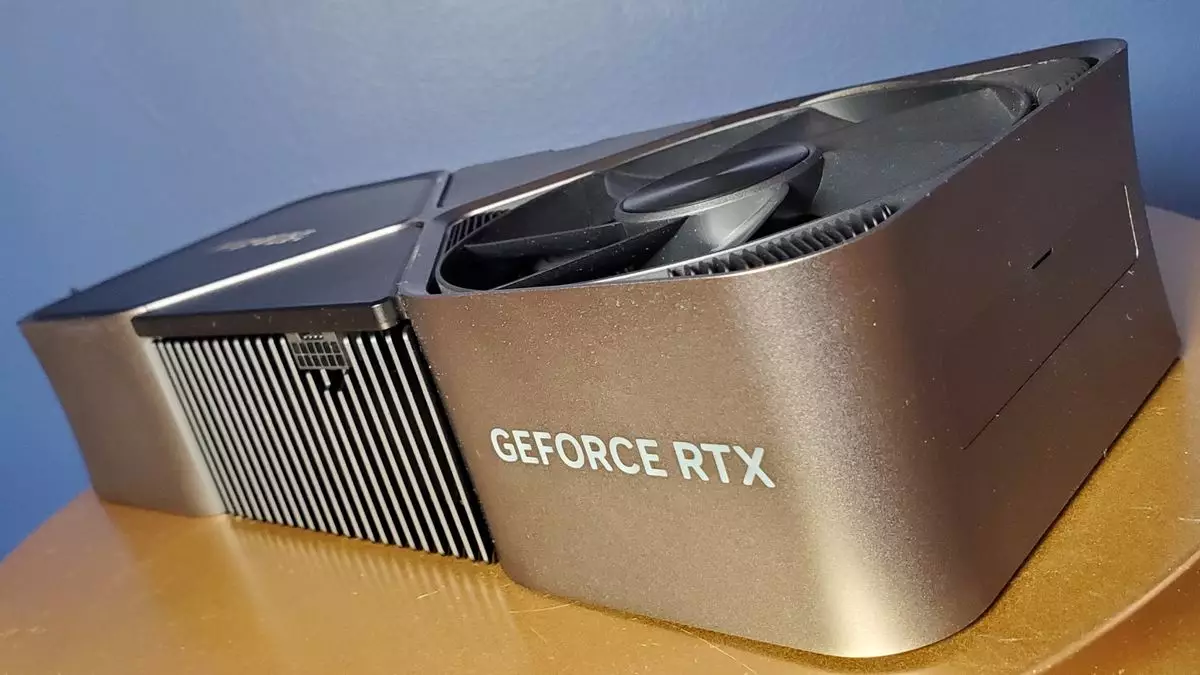As the world of graphics processing units (GPUs) continues to evolve, the growing appetite for power among these components raises eyebrows and concerns alike. Nvidia’s upcoming RTX 5090 exemplifies this trend, reportedly boasting a thermal design power (TDP) of an astounding 575 watts. This substantial figure not only positions it as a contender for one of the most demanding mainstream GPUs of the decade but also highlights the inherent complexities and demands of modern computing.
When we consider the power draw of the Nvidia RTX 5090, it’s crucial to examine it within the context of its predecessor, the RTX 4090. The 4090’s TDP stands at 450 watts, translating into a staggering increase of 125 watts for the forthcoming RTX 5090. This jump signifies a power consumption escalation of nearly 30%. In the computer hardware industry, such a leap is not merely a statistic; it reflects advancements in processing capabilities, efficiency, and overall graphics performance. Similarly, the RTX 5090 is expected to feature 21,600 CUDA cores, representing a robust 30% increase from the 16,000 cores of the RTX 4090.
This growth is indicative of Nvidia’s broader ambitions to enhance graphical fidelity and processing power, catering to a user base that increasingly demands realistic gaming experiences, advanced simulations, and complex renderings.
The anticipated RTX 5080, also discussed in various online leaks, has emerged with its own power-related figures, reportedly standing at 360 watts TDP. This represents an increase of merely 40 watts over the RTX 4080, which registered a 320-watt consumption. Initially, speculations hinted at a potential TDP of 400 watts for the 5080, suggesting a more conservative approach compared to its more prominent sibling, the 5090.
Despite these seemingly moderate increases, both cards will benefit from the introduction of GDDR7 memory. This newer memory type promises to be less power-intensive than the GDDR6X that characterized the previous 40 series. As power efficiency becomes increasingly pivotal in hardware design, it appears Nvidia may be finding new ways to boost performance without simultaneously inflating energy demands excessively.
A notable consequence of these evolving power demands is the necessity for users to evaluate their current power supply units (PSUs). Those who have not upgraded their power supplies in recent years might find themselves in need of a more robust solution to support next-generation graphics cards like the RTX 5090. Companies like Corsair have already begun to acknowledge the reality of these power-hungry devices, launching PSUs designed explicitly for compatibility with high-performance setups.
The recent issues associated with the 12VHPWR connectors during the rollout of the 40 series cards highlight the critical nature of robust hardware compatibility. Corsair’s proactive stance communicates the company’s acknowledgment of potential faults and their commitment to ensuring that customers can safely and effectively power their GPUs.
While discussions surrounding TDP and power consumption can often overshadow the technical advancements at play, it’s essential to recognize that Nvidia’s pursuit of higher power draws typically correlates with enhanced performance metrics. The computing market thrives on progress, and each iteration of Nvidia’s graphics cards positions itself as a pivotal stepping stone toward delivering unprecedented graphical performance.
The Nvidia RTX 5090, with its anticipated 575 watts of power consumption, is not merely an argument for a power supply upgrade; it embodies the relentless innovation within the GPU market. As enthusiasts and gamers alike gear up for the next wave of graphics technology, it is clear that the requirements will demand not only enhanced hardware but also a reevaluation of how we manage and consume power in our computing rigs. The convergence of high performance and high power efficiency will define the next chapter, pushing limits and enriching the user experience.

